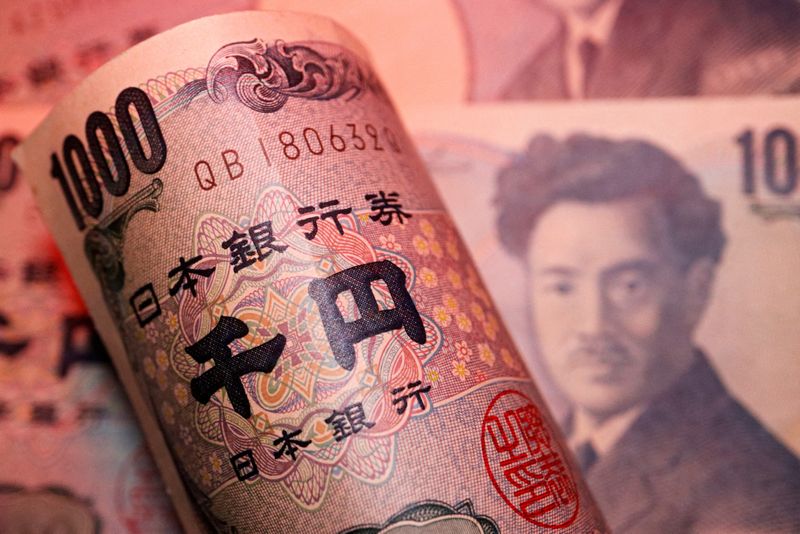Morning Bid: Inflation scares and yen bears
2024.06.26 18:14
By Jamie McGeever
(Reuters) – A look at the day ahead in Asian markets.
Inflation scares in Canada and Australia this week are a reminder that the global monetary easing cycle expected to broaden out and accelerate in the second half of the year is by no means certain.
This is a potential headache for investors in Asian and emerging markets as the mid-point of the year approaches, and could weigh on their investments for the next six months.
Figures on Wednesday showed that Australian inflation in May rose much faster than expected, back up to 4% and enough to flip the interest rate outlook – traders now reckon a rate hike this year is more likely than a cut.
The dollar’s rally quickly evaporated, however, much like the Canadian dollar’s rally following surprisingly strong Canadian inflation numbers earlier this week.
Both succumbed to the U.S. dollar, which hit a two-month high against a basket of major currencies on Wednesday. Will the inflation pulse in Canada and Australia show up in U.S. data too, and prevent the Fed from cutting rates?
This is the worry for Asia and emerging markets – a strong U.S. dollar tightens global financial conditions and steers capital towards U.S. assets at the expense of emerging markets.
So does rising Treasury yields, and on Wednesday U.S. bond yields broke out of their recent slumber and spiked higher. Wall Street closed modestly higher, but the dollar and yields may have more influence on Asian trading on Thursday.
Thursday’s Asia & Pacific economic calendar sees the release of Japanese retail sales, industrial profit numbers from China, an interest rate decision from the Philippines, and a speech from Reserve Bank of Australia deputy governor Andrew Hauser.
The Philippine central bank is widely expected to keep its key policy rate on hold at 6.50% for a sixth consecutive meeting, according to a Reuters poll, and deliver the first cut in the last three months of the year.
The Philippine peso is at its lowest level of the year against the U.S. dollar, down 6% year-to-date.
That’s only half of the 12% decline registered so far this year by the Japanese yen, which hit a 38-year low against the dollar on Wednesday.
It is now well below the 160.00 per dollar level that triggered large-scale yen-buying intervention from Japanese authorities nearly two months ago.
Not this time, at least not yet.
Unsurprisingly, short-dated dollar/yen implied volatility has spiked higher, but the magnitude of increase and levels reached hardly suggest traders are fearful of heavy-handed intervention.
Overnight implied vol on Wednesday rose the most since mid-May but only back to where it was on Tuesday. One-week implied vol rose the most in four weeks, but again, only back to where it was in mid-June.
Here are key developments that could provide more direction to markets on Thursday:
– Philippines rate decision

– Japan retail sales (May)
– China industrial profits (May)








